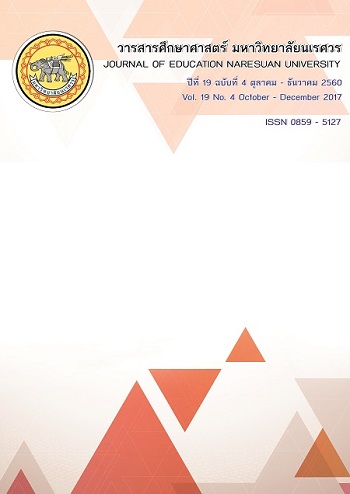THE TRAINING PACKAGES DEVELOPMENT ON PHYSICAL THERAPY CLINICAL TEACHINGFOR CLINICAL INSTRUCTOR
Main Article Content
Abstract
This research aimed to develop the training packages on physical therapy clinical teaching for Clinical Instructor. The research design was mixed method approach: qualitative method was used to collect baseline information, draft the training packages and quantitative method was used to evaluate the training packages. The results showed that at present, training on physical therapy clinical teaching for clinical Instructor was not enough. Clinical instructors were acting as a practitioner role more than a clinical instructor role. The main problems were inappropriate supervision in clinical practice, inefficient questioning technique, and insufficient teaching in clinical reasoning. Training on techniques and methods of clinical teaching were needed; especially analysis of patient’s problem. The content of the draft of the training packages on physical therapy clinical teaching for clinical Instructor was teaching in clinical reasoning which consisted of one instruction handbook and five training packages books. There were three phases of training: preparation of training, training and post training. A phase of training takes one day. The teaching clinical reasoning had six steps: planning for collect patient’s data, formulating initial hypothesis and planning for objective examination, revising hypothesis, planning for treatment, planning for reassessment and reflection. The draft of the training packages were rated in highest level in 11 items for appropriateness and highest level in all items for accuracy.
Article Details
The owner of the article does not copy or violate any of its copyright. If any copyright infringement occurs or prosecution, in any case, the Editorial Board is not involved in all the rights to the owner of the article to be performed.
References
Callahan, M., et al. (1968). Physical therapy education therapy and practice. New York: Council of Physical Therapy school Directors.
Chockjamsai, M. (2015). Questioning skill. Chiang Mai: Department of Physical Therapy, Faculty of Associated Medical Sciences, Chiang Mai University. (in Thai)
Iramaneera, C. (2012). Questioning techniques. Retrieved March 13, 2014, from www.med.cmu.ac.th (in Thai)
Janwantanakul, P., Mark Jones, & Pirunsan, U. (2000). Clinical Reasoning (Chapter 1): Theory. Journal of Physical Therapy, 22(2), 143-60.
Jones, M. A. (1992). Clinical Reasoning in Manual Therapy. Physical Therapy, 72, 875-884.
Khemmani, T. (2010). Science of teaching: A body of knowledge for effective learning management (13th ed.). Bangkok: Chulalongkorn University Press. (in Thai)
Massarweh, L. J. (1999). Promoting a positive clinical experience. Nurse Educator, 24(3), 44-47.
Office of the Higher Education Commission. (2013). Bachelor of Physical Therapy or Bachelor of Science (Physical Therapy) B.E. 2556 (2013). Retrieved March 13, 2014, from http://www.mua.go.th/users/tqf-hed/Information/bach_physical.pdf (in Thai)
Page, C. G., & Ross, I. A. (2004). Instructional strategies utilized by physical therapist clinical instructors: An exploratory study. J Phys Ther Educ, 18(1), 43-49.
Panich, V. (2014). Learning of revolution in 21st century (2nd ed.). Bangkok: Chulalongkorn University. (in Thai)
Rattanathongkom, S. (2007). Classroom management. Retrieved March 13, 2014, from, http://ams.kku.ac.th/aalearn/resource/edoc/ci/swu/learn2.pdf (in Thai)
Schön, D. (1983). The reflective practitioner: How professionals think in action. New York: Basic Books.
Stritter, F. T., Baker, R. M., & Shahady, E. J. (1988). Clinical instruction. Handbook for the academic physician. New York: Springer-Verlag.


